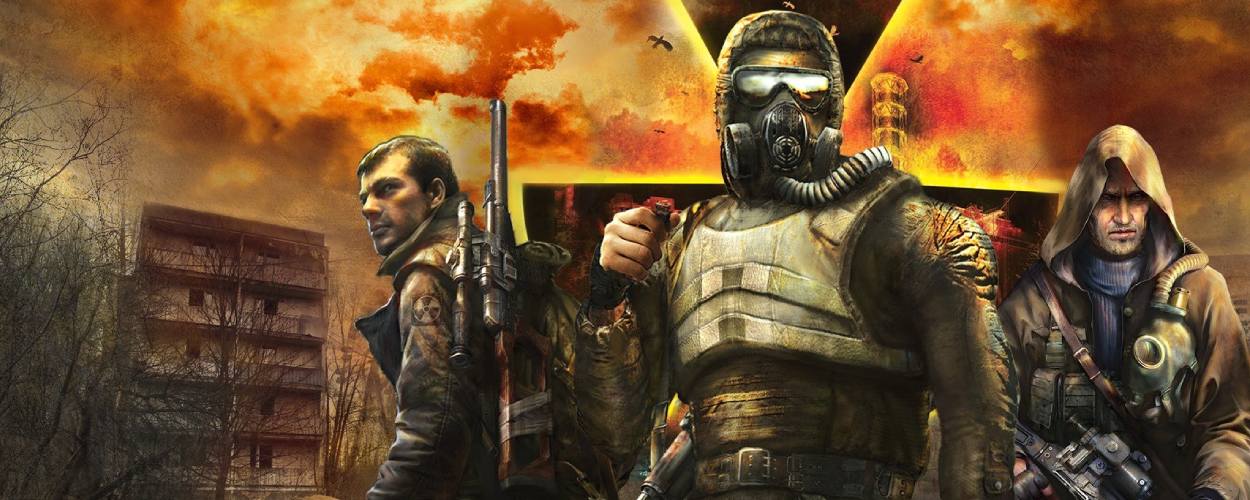With STALKER 2 long-awaited release scheduled for later this year, there’s been an unsurprising spike in interest surrounding the original trilogy which debuted on PC almost two decades ago. Capitalising on this curiosity, Ukrainian publisher GSC recently launched STALKER: Legends of the Zone Trilogy, bringing the three games to Xbox and PlayStation for the first time.
The trilogy marks an opportune gateway into the STALKER series, but it comes with one major caveat. Despite the visual and quality of life improvements, these games have not really been rebuilt or redesigned with a console audience in mind. They also hail from an era in which first person shooters didn’t all ascribe to a similar, Call of Duty-like template.
As the developers claim, the trilogy has been preserved – warts and all – but with some of those rough edges rounded off to make the games playable with a gamepad on newer consoles. In that respect alone, it’s a success, and although some players might baulk at the lack of hand-holding and other modern gaming comforts, the STALKER trilogy will give you an appreciation for what the developers wanted to achieve back in 2007 and how the series’ mechanics, setting, and storytelling evolved. Most of all, it helps lay the groundwork for the upcoming sequel.
Heavily inspired by Andrei Tarkovsky’s Stalker – a 70s sci-fi film based on the novel, Roadside Picnic – this isn’t the kind of bizarre retro futuristic post-apocalypse portrayed in the Fallout franchise. STALKER is grim, grey, and lonely, with players left to fend for themselves within sprawling radioactive sandboxes where warring factions lay in ambush, mutated beasts roam, and where indescribable anomalies can materialise from out of nowhere.
Best described as first person survival games, you’ll run errands for various NPCs while also making sure you’re fed and free of radiation, building and maintaining loadouts of gear and weapons you’ve either scavenged or traded for. The survival mechanics aren’t as in-depth as we now see in most modern survival sims that heavily feature crafting and base-building systems. This works in STALKER’s favour, with survival elements helping to amp up the immersion without obstructing the player’s path between missions.

Shadow of Chernobyl is where the STALKER saga begins and it is, unsurprisingly, the toughest of the three games for PlayStation and Xbox players to acclimatise to. Although it does feature some handy signposting to help navigate its open world, the gunplay lacks finesse and inventory management and menus throw up obstacles. A lack of fast travel or vehicles also means that you’ll spend long stretches sprinting between distant objectives, though clear attempts have been made to populate the world with points of interest to make travelling across the Zone feel like a proper post-apocalyptic odyssey. You might come upon abandoned stashes of weapons and equipment, stumble into a gunfight between STALKER and military forces, or suddenly be chased by a strange ball of lightning.
Clear Sky launched around 18 months after the original STALKER and serves as a narrative prequel. As Scar, a hired gun originally tasked with escorting scientists into the Zone, you somehow survive a catastrophic blast emanating from the Chernobyl Nuclear Power Plant that wipes out your squad. Rescued by Clear Sky, an organisation looking to unearth the secrets behind the Zone’s anomalies, you’re reintroduced to STALKER’s hazardous wasteland with new areas and survival mechanics to explore. The shooting gameplay feels a little tighter here, with Clear Sky adding a slew of weapon customisation options as well as full-on faction battles that will see survivor squadrons engage in tense gunfights as they scrap for territory across an ever-moving frontline.

Call of Pripyat closes out the original STALKER trilogy, and is easily the most polished and refined game of the three. It embodies the same isolated atmosphere and nonlinear, open world design seen in Shadow of Chernobyl and although menus can still prove fiddly for controller-wielding survivors, it’s a smoother, more forgiving all-round experience that dials up the story-telling and world-building while still allowing players to venture out and create their own unique survival stories through moments of emergent gameplay.
The closest comparison that comes to mind while playing the STALKER trilogy is Metro Exodus, which should come as no surprise considering that series developer, 4A Games, was founded by former GSC developers. As we’ve already mentioned, the rusty gunplay in STALKER isn’t as frenetic or sharp as, say, Call of Duty, though fans have come to appreciate this roughness as another immersion technique. Guns jam, monsters swarm, and human enemies showing a surprising amount of adaptability as they outflank you and search for cover – something that becomes increasingly more dynamic throughout the trilogy. It all combines to add a level of desperation to each scrappy skirmish you run into.

On the sliding scale of remasters, the Legends of the Zone Trilogy is more of a port rather than an attempt to give these games a total makeover. Performance-wise, they run smoothly though character models, animations, environments detail, and lighting have been left almost entirely unchanged. To reiterate, the trilogy presents console players with an opportunity to play through these STALKER titles in the same condition that PC players have been able to experience them for the last decade and a half. As someone who struggled to get them running on my own PC back around the time they launched, being able to finally venture into the Zone on console has been immensely satisfying, even if these ageing first person shooters don’t cater for modern gamer sensibilities.
As for STALKER 2, after many years of waiting, fans will once again be reunited with the series when it launches later this year on September 5, 2024 for PC and Xbox Series X|S.





